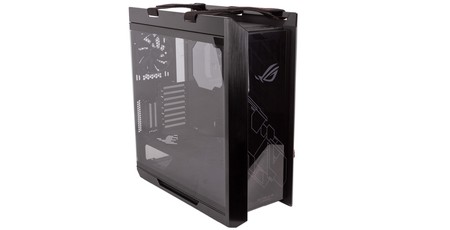
Manufacturer: Asus
UK price (as reviewed): MSRP £250 (inc. VAT)
US price (as reviewed): MSRP TBC
The case market is notoriously crowded, so trying to make a name for yourself in it is risky business – even for a brand like Asus. Motherboard and graphics card manufacturers have historically only had small and largely unsuccessful ventures into the world of chassis, but equally if a company like Phanteks can storm in so successfully, there’s nothing stopping a behemoth like Asus from doing the same, and the ROG Strix Helios has certainly been generating buzz since it was unveiled in concept form at Computex last year and teased again at CES this year.
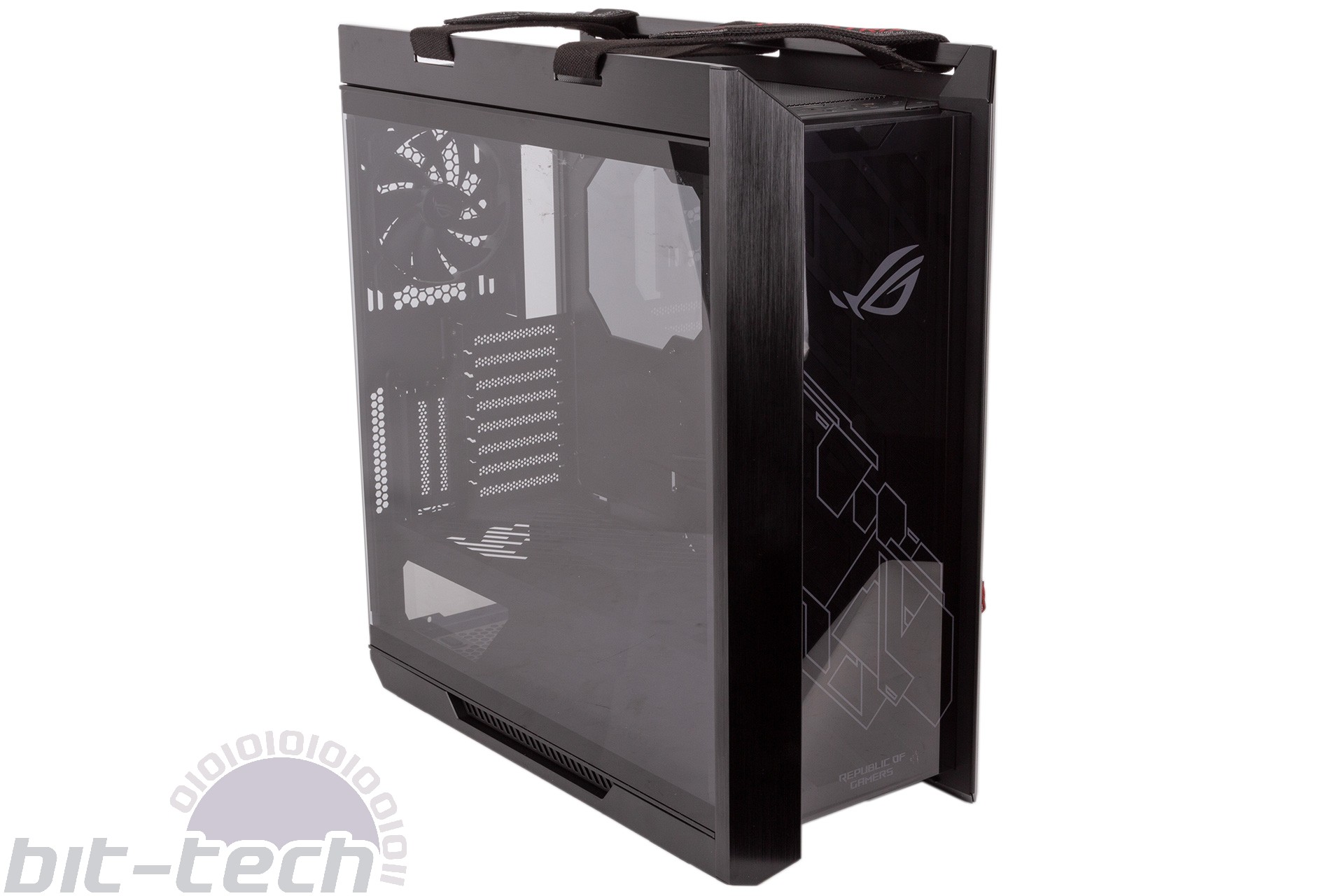
The ROG Strix Helios is solid and heavy (18kg), thus befitting its £250 price. The side panels are a tad rattly but secure nonetheless, and overall build quality is very high, with rubber feet keeping the thing planted on smooth surfaces too.
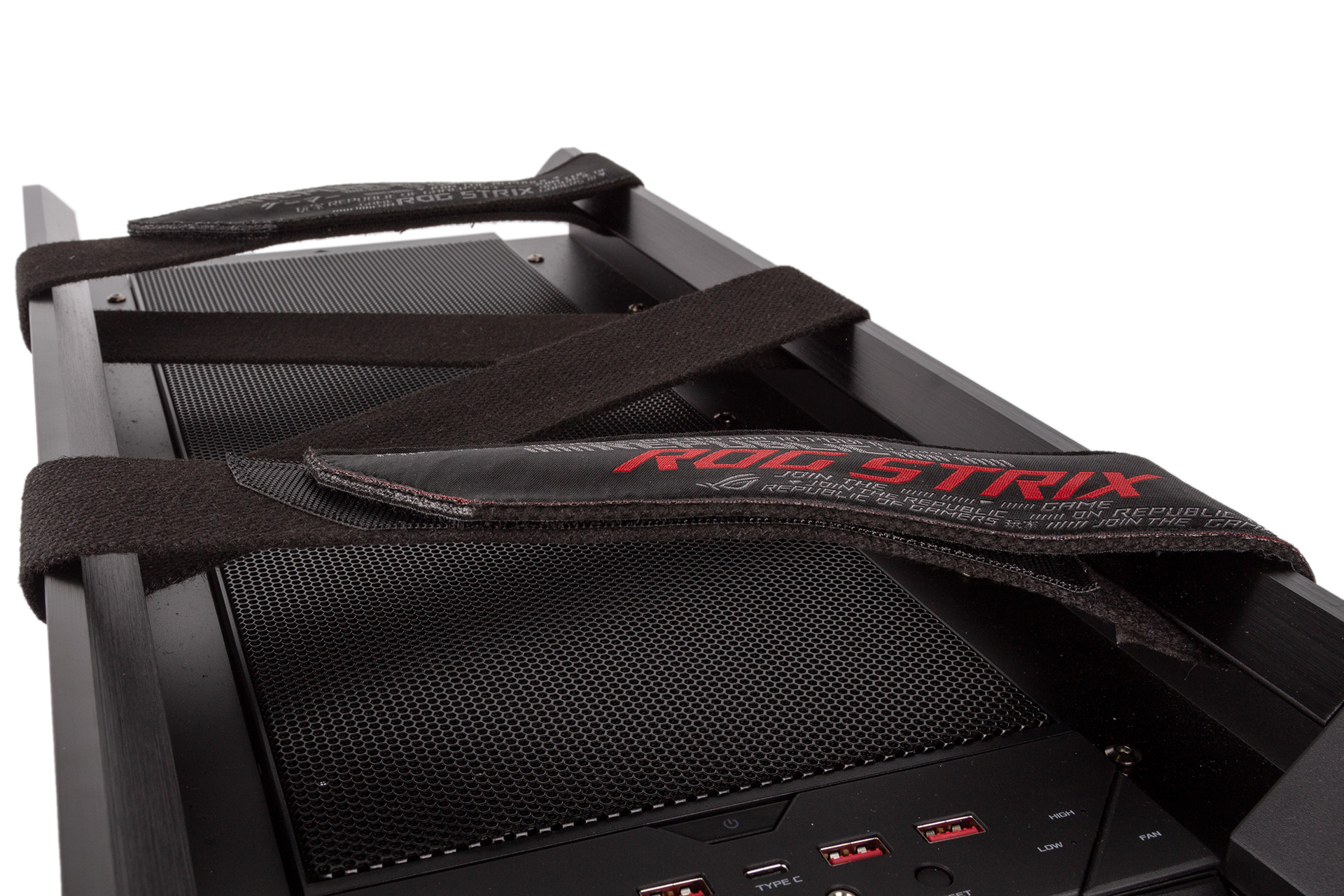
The front struts are made of plastic but have a brushed aluminium exterior, while the roof struts are fully aluminium and tightly secured to the steel chassis. Just as well, because Asus weaves a strip of foam through these to act as a handle. It’s a solid system in practice and makes lugging the chassis around considerably less daunting, although it is fussy weaving it back into place if you’ve removed it prior.
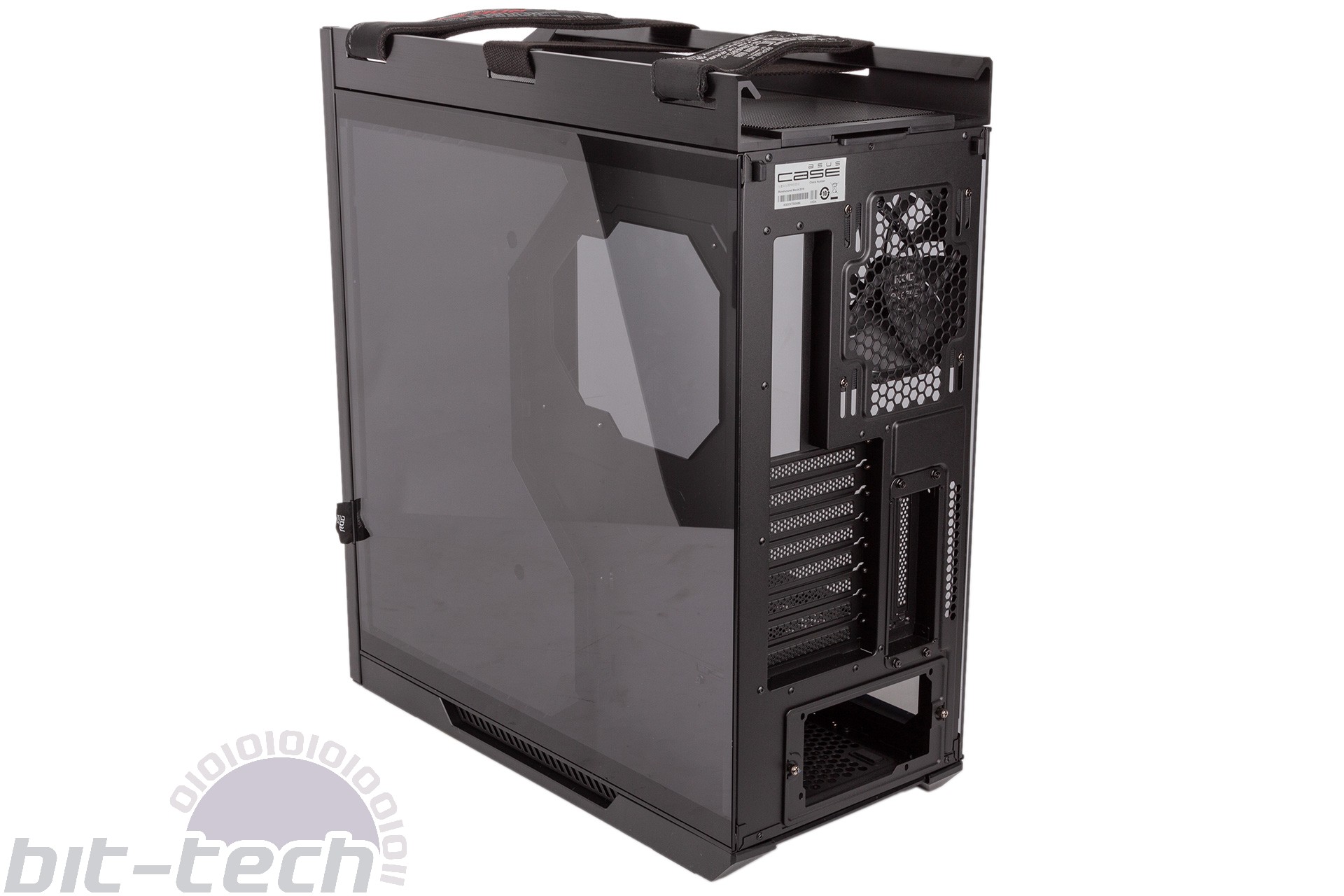
Asus embraces the tempered glass and RGB trend fully here. Both side panels and the front one are made from tempered glass, and the front one has integrated RGB lighting illuminating ROG logos and patterns. It’s annoying, however, that the sticker warning you to be careful when handling the glass leaves behind lots of residue when you peel it off.
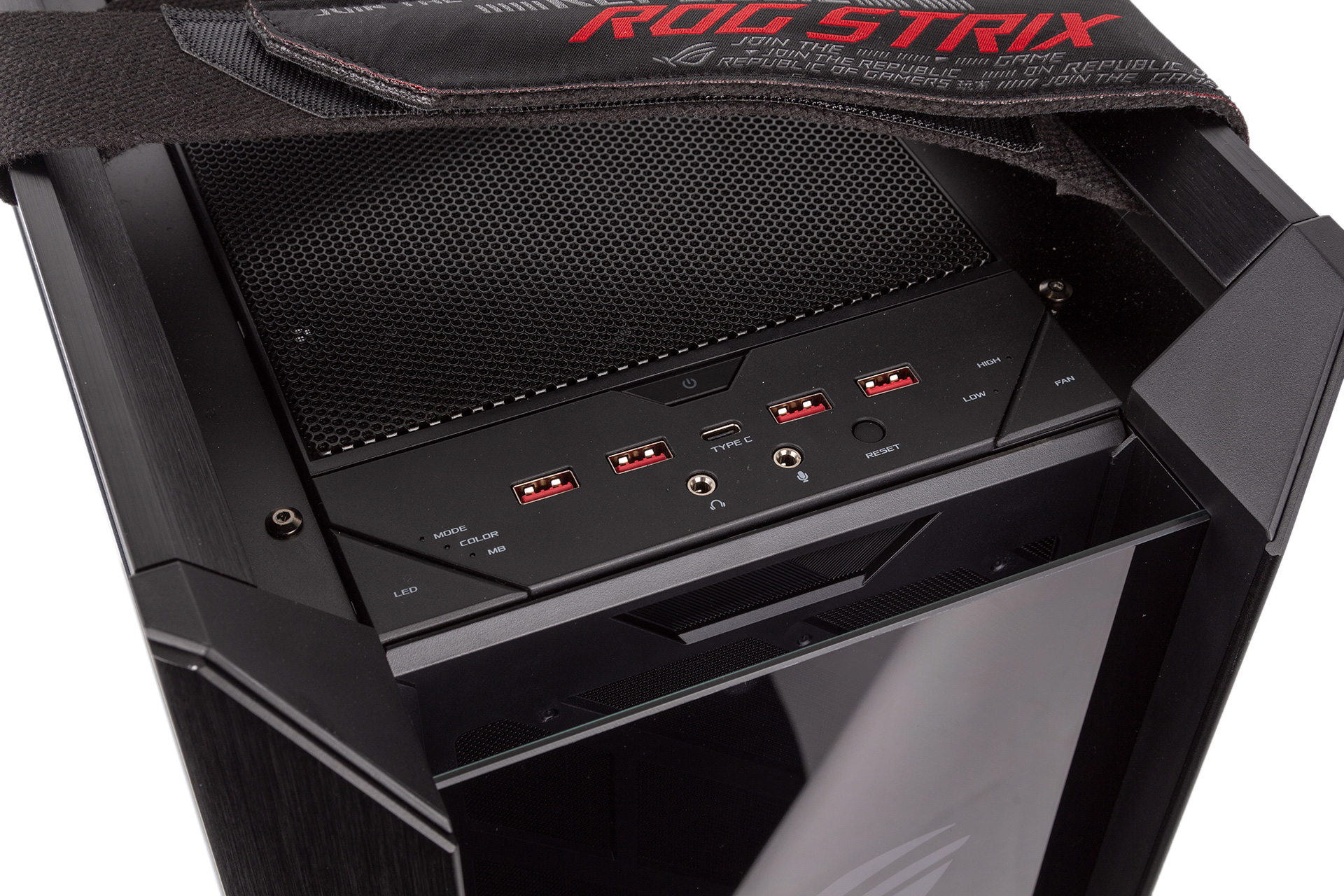
The I/O panel is easy to access if the case is on the floor, and it’s well equipped too. Four USB 3.0 ports are joined by a full-speed (Gen 2) USB 3.1 Type-C port, and the usual audio jacks. A nice touch is that dust covers are supplied for two of the USB 3.0 ports and the Type-C just in case your board doesn't have the necessary headers to make these work.
Power and reset buttons are complemented by both LED and fan control. The I/O panel and buttons are only made of plastic, however; it would really add to the premium feel if Asus had used some aluminium here, as this is actually one area designed to be physically interacted with. The LED control has four onboard modes of its own (static, breathing, strobe, and rainbow cycling) and nine colour choices including multi-colour, but it also allows you to hand over control to motherboard/software assuming you have a compatible addressable RGB header. Asus Aura Sync is of course fully supported in this regard, but other software ecosystems should be too. The fan control, meanwhile, is simplistic in only offering high and low speed settings, but that’s better than nothing. Small indicator LEDs make using both controllers intuitive.
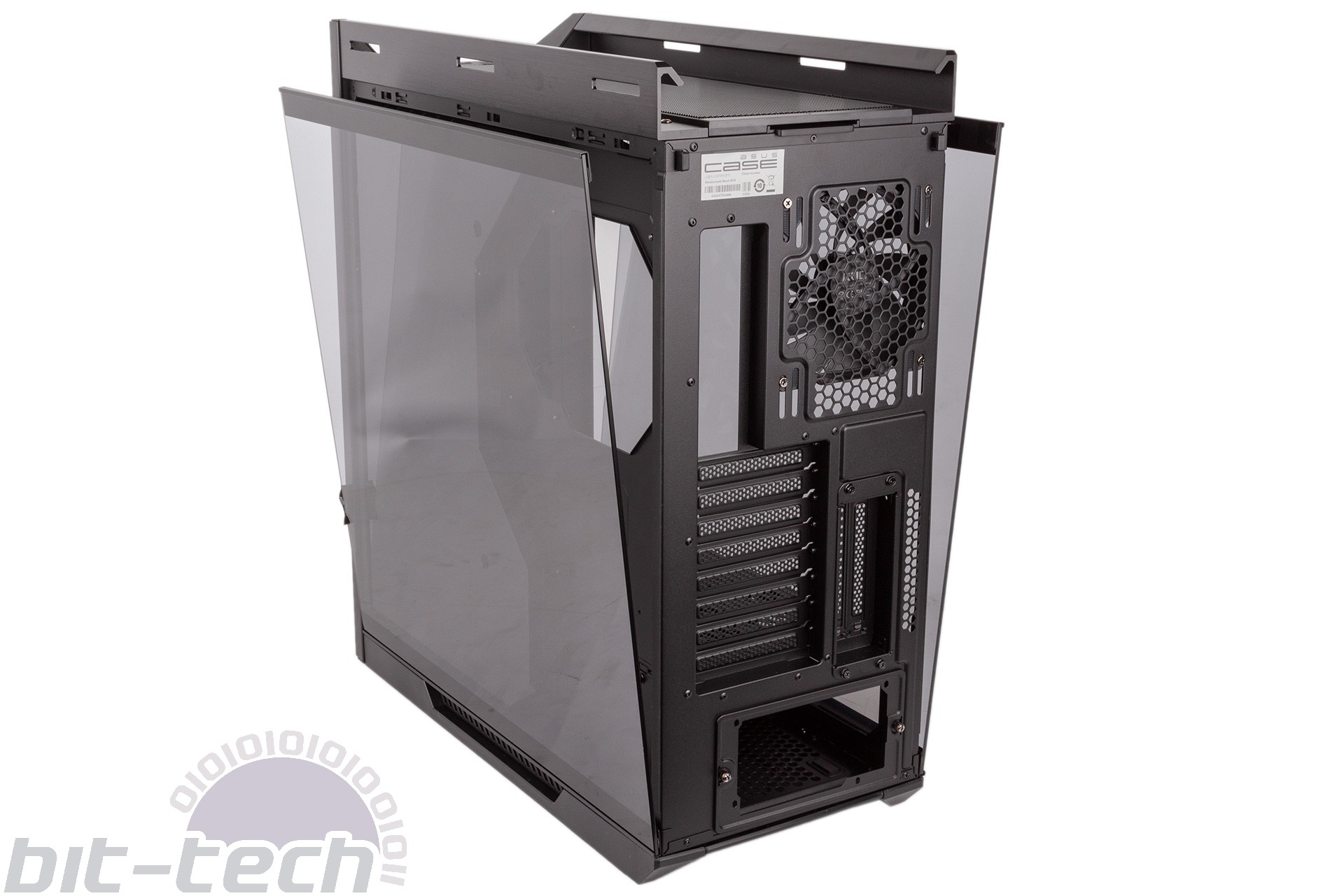
Eight expansion slots mean you can use dual-slot cards in your motherboard’s lowest slot, which is potentially beneficial for X299 and X399 owners. Vertical GPU expansion slots also reveal Asus to be supporting another of the latest trends, and in fact the company goes further by actually supporting vertical dual-GPU arrangements – more on that over the page. Either way, you’ll need to purchase your own riser cable for each vertical GPU, which is the norm given the cost of bundling them with cases.
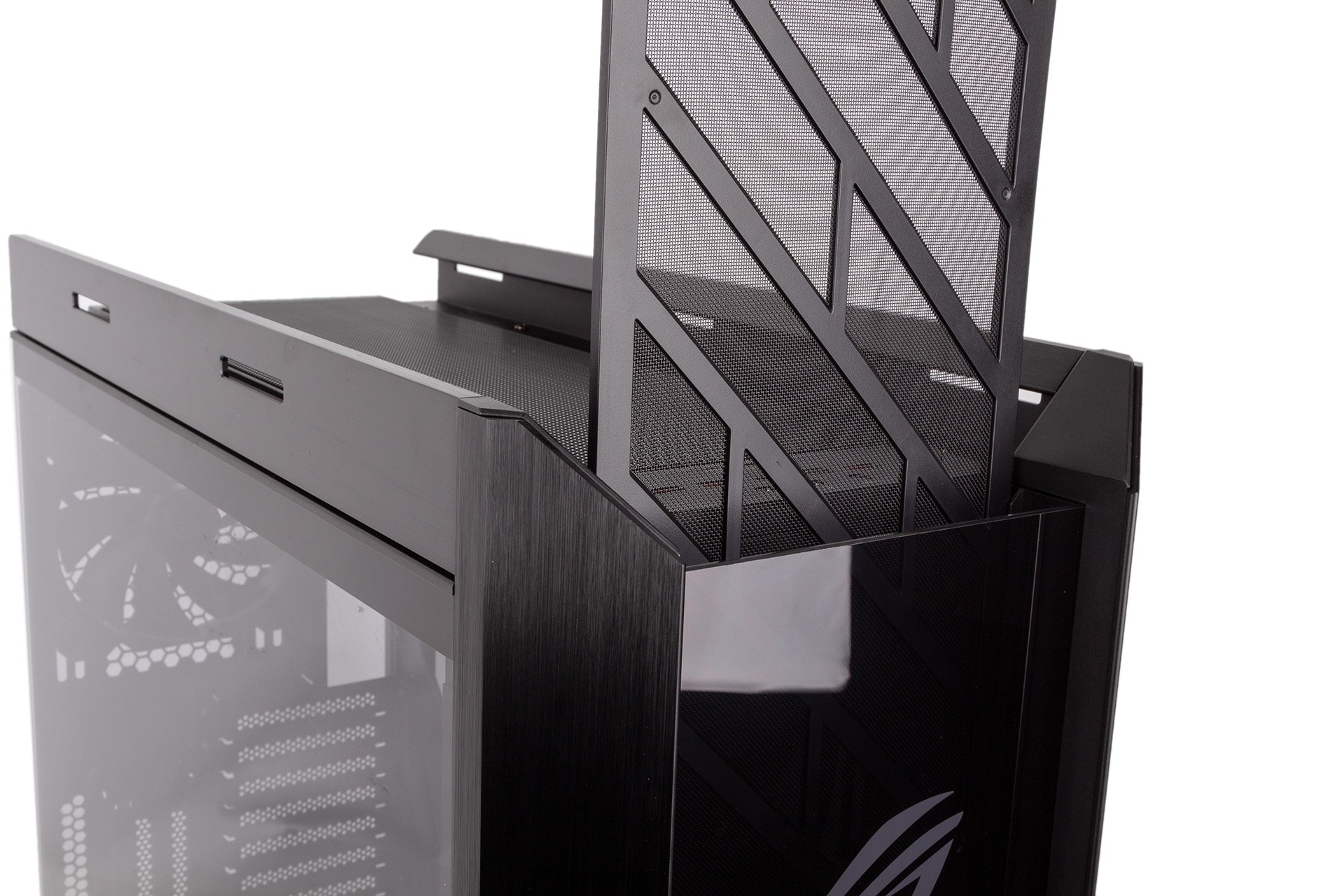
Airflow is provided by three 140mm intake fans and a single 140mm rear exhaust, which should see positive pressure force additional air out through the roof. That said, the front panel is going to impede airflow, even with Asus leaving a large gap between it and the fans. Thankfully, the roof is nice and porous. Vertical GPUs will still receive a good blast of air from the front, but the panel leaves no gap between itself and the chassis, so having a large, effective GPU cooler would be recommended (or just go full liquid-cooling).
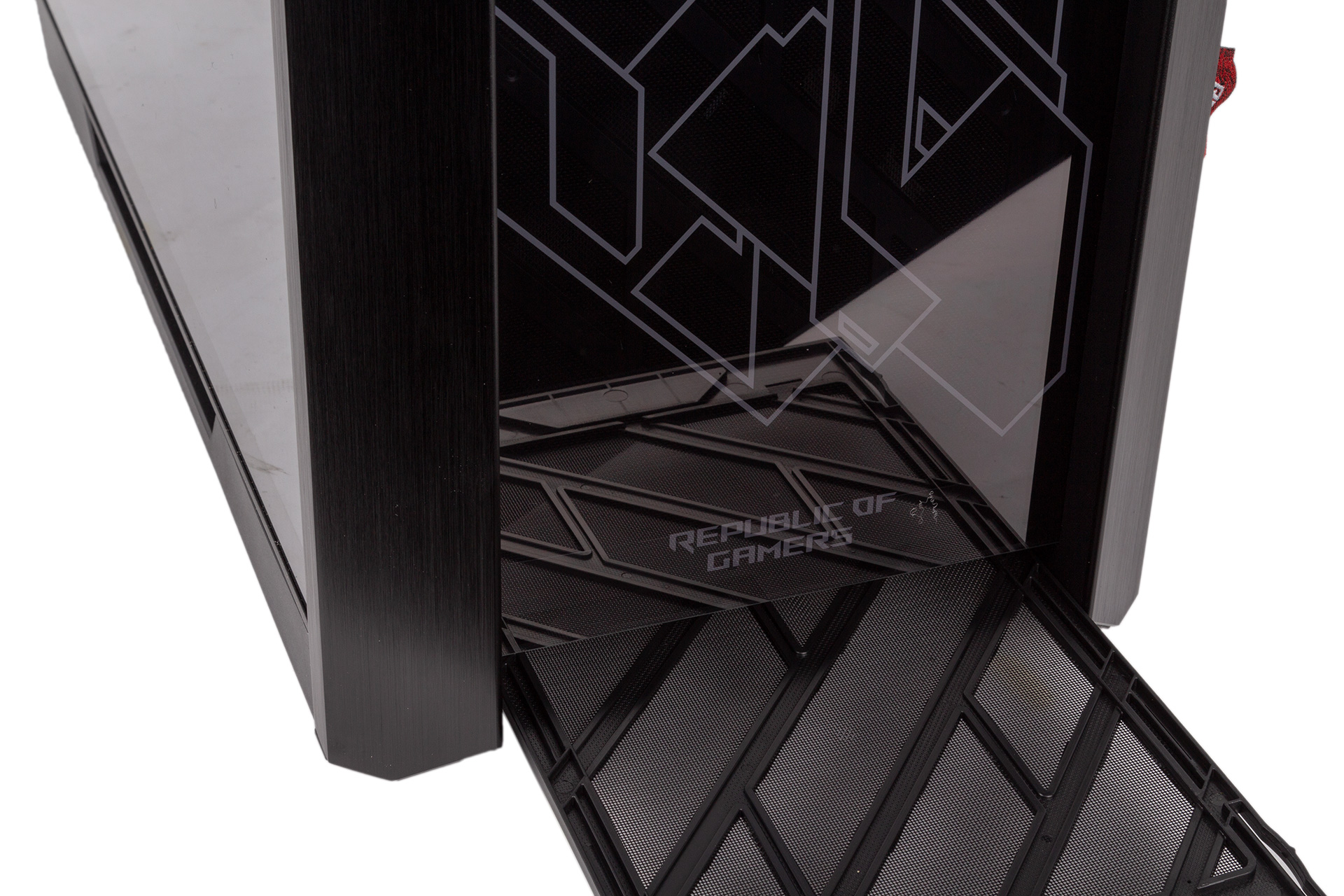
The fans are not RGB, which is fine, as this would just interfere with the front panel lighting and add to cost. We’re pleased that they all have rubberised corners to dampen vibrations. The rear mount is also height-adjustable in keeping with other high-end designs. Only the roof is available for extra fans, with Asus choosing not to make the case flexible enough to allow bottom fans.
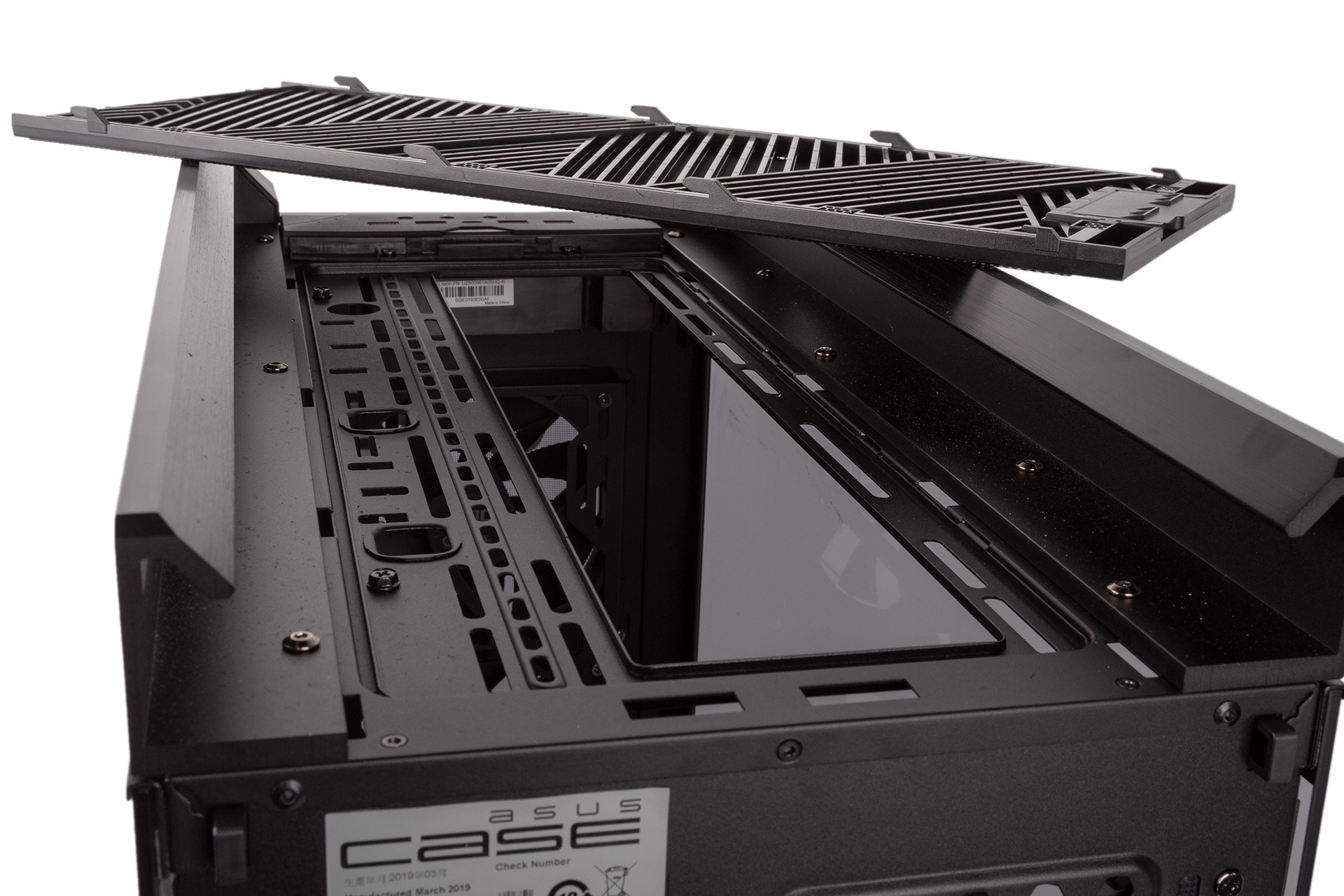
The top, bottom, and front sections all have full-length dust filters that are very easy to remove and replace – this is an area Asus has done very well in. The front one slides upwards and is magnetic too, while the bottom uses front-accessible rails and the roof uses clips and a rear release toggle. This top one is a bit fiddly to remove if you have the handles in place, but it’s still doable.
Specifications
- Dimensions (mm) 250 x 565 x 591 (W x D x H)
- Material Steel, aluminium, plastic, tempered glass
- Available colours Black
- Weight 18kg
- Front panel Power, reset, 1 x USB 3.1 Gen 2 Type-C, 4 x USB 3.0, headphone, microphone, fan control, addressable RGB LED control
- Drive bays 2 x 3.5"/2.5", 5 x 2.5"
- Form factor(s) E-ATX, ATX, micro-ATX, mini-ITX
- Cooling 3 x 140mm/120mm front fan mounts (3 x 140mm
fans included), 1 x 140mm/120mm rear fan mount (1 x 140mm fan included),
3 x 120mm or 2 x 140mm roof fan mounts (fans not included)
- CPU cooler clearance 190mm
- Maximum graphics card length 450mm
- Extras Removable dust filters, six-port fan hub, pump bracket, secondary vertical GPU bracket

MSI MPG Velox 100R Chassis Review
October 14 2021 | 15:04

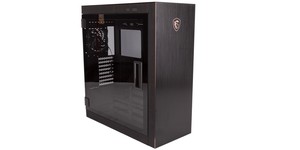






Want to comment? Please log in.